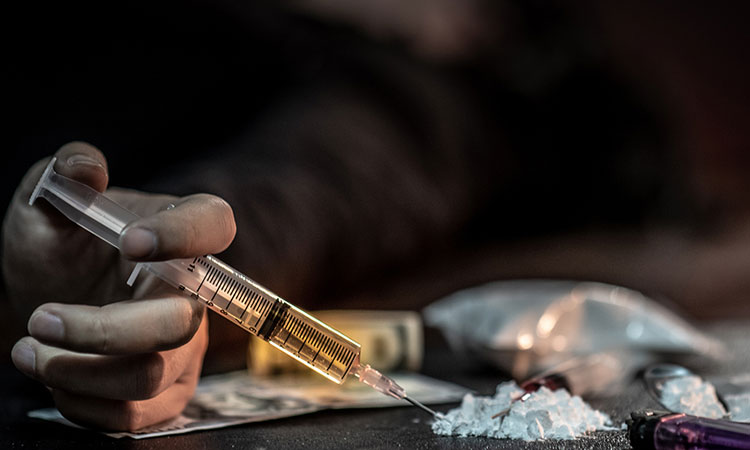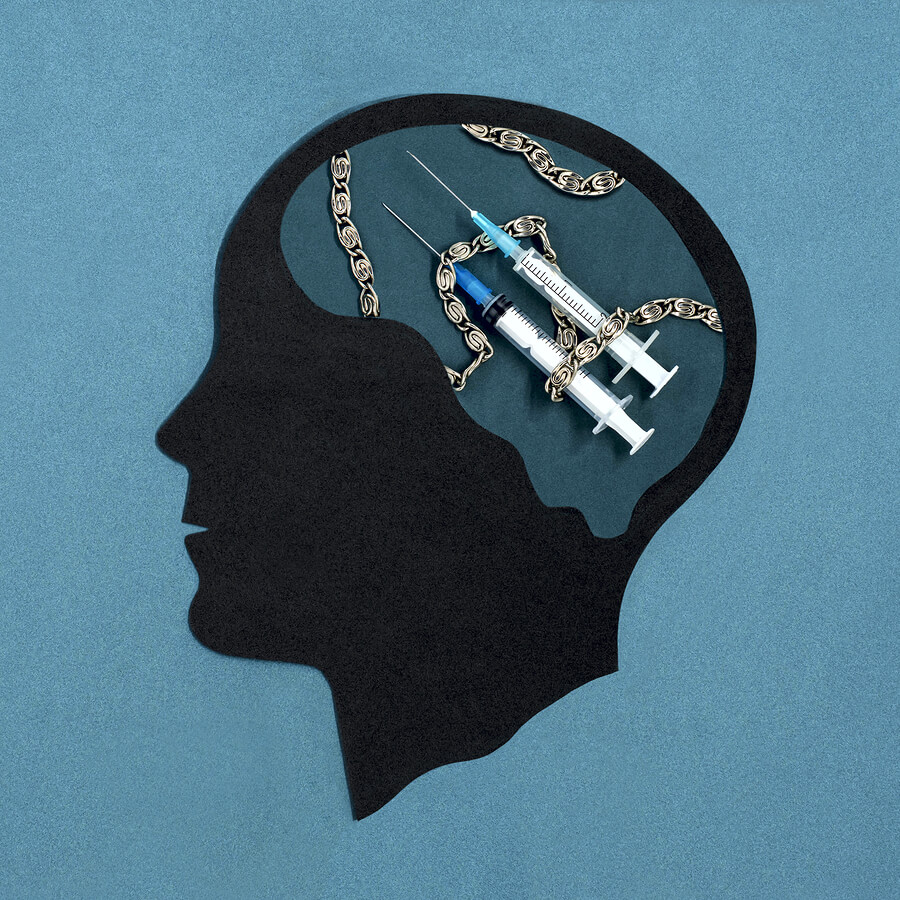
Heroin (diamorphine) is an opioid drug synthesized from the opium poppy, a flower native to Asia and South America. As a Schedule I narcotic in the U.S., heroin has no approved medical purpose but remains a popular recreational drug due to the euphoric effects it induces.
Relatively pure heroin comes in the form of a fine white powder, although it is also frequently found as a dark brown powder or a black sticky substance (black tar heroin).
How Heroin Works
Heroin and other opioids are effective painkillers and central nervous system (CNS) depressants. When an injury occurs, nerve cells around the site of the injury send a warning signal to the brain. In response, the brain enters survival mode and begins to regulate concentrations of painkilling hormones (beta-endorphins) at opioid receptors throughout the body.
Heroin and other opioids/opiates also activate beta-endorphins as a means to relieve pain. Subsequently, heroin dramatically increases dopamine concentrations in the CNS and promotes feelings of euphoria and relaxation.
The region of the brain with the most dopamine activity is referred to as ‘the reward center.’ These neural circuits are the catalysts for the pleasure people experience during rewarding activities, such as eating, sex, business or social successes, or nearly anything that furthers our biological survival.
Short-Term Heroin Side Effects
The feeling of euphoria caused by a heroin injection is incredibly intense and overpowering. Some heroin users report experiencing a deep sense of calm and warmth that eliminates stress and negative thoughts and feelings.
A powerful high that can last up to five hours will follow the initial rush. In many cases, a user will be considered to be “on the nod” as if fluctuating between a warm, drowsy but relatively alert state and sleeping.
In addition to the rush of euphoria, there are several short-term heroin side effects, including the following:
- Dry mouth
- Flushed skin
- Heaviness in extremities
- Clouded thinking and impaired judgment
Heroin Addiction
Unlike the constant, balanced ebb and flow of reward chemicals that motivate behavior during daily life, the brain’s reaction to heroin exposure is profound. Heroin produces a surge of dopamine that is excessive relative to the user’s circumstances. Indeed, some studies have suggested that heroin use can increase neuronal dopamine concentrations as much as tenfold.
This oversaturation interrupts and alters otherwise healthy patterns of chemical neurotransmission, and prolonged use adversely reconfigures the entire brain. In addition to this drug-induced physiological change comes a corresponding disruption in behavior.
Heroin use causes sensations of false reward so intense that the mind becomes destructively one-tracked and hell-bent on sustaining the high. The self-sabotaging nature of this obsession with the drug is what makes heroin so addictive and so remarkably tragic.
A heroin addict may often contemplate and rationalize reasons why they need to quit as a matter of moral responsibility to themselves and others. And yet, the physical experience of heroin cravings is much more real and urgent and is thus prioritized accordingly.

Long-Term Heroin Side Effects
Heroin use has profound long-term effects that compromise the brain’s ability to carry out essential bodily functions, including the following:
- Respiration
- Blood pressure
- Heart rhythm
- Consciousness
Other long-term physical effects may include the following:
- Pneumonia
- Collapsed veins
- Liver and kidney disease
- Track marks from injecting and infected abscesses
- Infection of the heart valves and lining
- Severe constipation
What’s more, because heroin is frequently adulterated with other substances, there is a myriad of potentially serious complications that can arise. For example, heroin abuse has been associated with a degeneration of white matter in the brain, which is partly responsible for decision-making abilities, behavioral control, and stress management.
Intravenous heroin use comes with an increased risk of contracting diseases such as hepatitis and HIV, and sharing unsterile needles increases this risk significantly. If left unaddressed, hepatitis B and C can impair liver function or result in liver failure, and HIV can progress to AIDS.
Heroin Overdose
As a CNS depressant, heroin impacts the brain’s ability to regulate breathing. Due to this fact, oxygen deprivation in the brain (hypoxia) can occur and lead to irreversible brain damage or coma.
Signs of a heroin overdose typically include the following:
- Slow, labored, or shallow breathing
- Unresponsiveness and unconsciousness
- Bluing of the lips, fingers, or other extremities (cyanosis)
- Gurgling sounds (death rattle)
If you suspect someone you know has been using heroin and displays any of these signs, seek emergency medical immediately. Medical personnel can administer Narcan (naloxone) to reverse the effects of opioids at the opioid receptors, which could save a life.
Treatment for Heroin Addiction
Heroin addiction treatment usually begins with a clinically-supervised detox in which the patient is monitored and may be administered medication to relieve withdrawal symptoms. After detox, patients are urged to enter an intensive substance abuse treatment program.
Midwood Addiction Treatment offers an integrated, research-based and customized approach to addiction treatment that includes psychotherapy, individual and group counseling, peer group support, and aftercare planning services.
Recovery is a lifelong effort, but you don’t have to do it alone. We can provide you with the tools and support you need to reclaim your life!